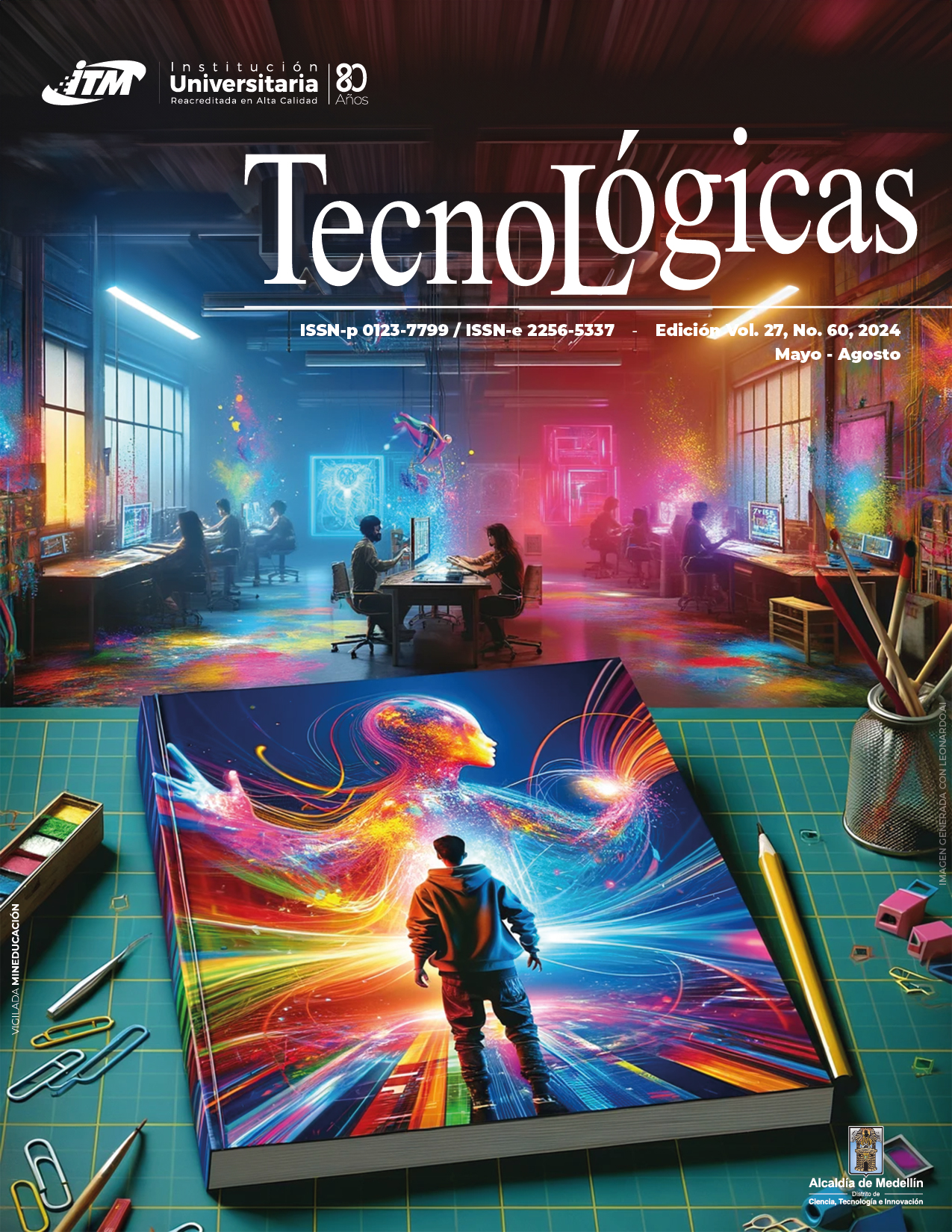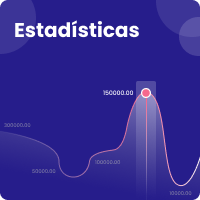Blockchain para asegurar la integridad y trazabilidad en la cadena de custodia de evidencia digital en informática forense: un estudio de mapeo sistemático
Resumen
La incorporación de blockchain como estrategia para mejorar la seguridad de la información en diversos sectores de la sociedad se ha identificado como una potencial solución para reducir los riesgos asociados con el tratamiento de datos en Internet. Garantizar la cadena de custodia en investigaciones forenses es esencial para preservar el registro y procedencia de la evidencia digital. No obstante, la falta de investigación en el desarrollo e implementación de soluciones que integren blockchain para la cadena de custodia dificulta su aplicación y adopción. Por ello, esta investigación tuvo como objetivo clasificar las características de blockchain que permiten garantizar la integridad y trazabilidad de la evidencia digital en el proceso de cadena de custodia, mediante una revisión de literatura basada en un Estudio de Mapeo Sistemático. El estudio describió los conceptos y estado actual de blockchain en relación con la cadena de custodia. Los hallazgos revelaron diversos marcos, pruebas de concepto, prototipos y protocolos que propusieron aplicaciones de blockchain en el registro, intercambio y trazabilidad de evidencia digital en diferentes contextos, así como los beneficios, limitaciones y desafíos asociados con su implementación. Como conclusión final, se destaca la estrecha relación entre integridad y trazabilidad como propiedades fundamentales para la construcción de aplicaciones blockchain, además de proporcionar una base sólida de información que pueda servir de referencia para futuras investigaciones.
Referencias bibliográficas
N. Rane, S. Choudhary, and J. Rane, “Enhanced Product Design and Development Using Artificial Intelligence (AI), Virtual Reality (VR), Augmented Reality (AR), 4D/5D/6D Printing, Internet of Things (IoT), and Blockchain: A Review,” SSRN Electron. J., Nov. 2023. http://dx.doi.org/10.2139/ssrn.4644059
Sakshi, A. Malik, and A. K. Sharma, “Blockchain-based digital chain of custody multimedia evidence preservation framework for internet-of-things,” J. Inf. Secur. Appl., vol. 77, p. 103579, Sep. 2023. https://doi.org/10.1016/j.jisa.2023.103579
W. Bank, "The Digital-Climate Nexus," In Green Digital Transformation: How to Sustainably Close the Digital Divide and Harness Digital Tools for Climate Action. Washington, DC: World Bank, 2023, pp. 1–23. https://openknowledge.worldbank.org/handle/10986/40653
H. Koppisetty, K. Potdar, and S. Jain, “Cyber-crime, Forensics and use of Data Mining in Cyber Space: A Survey,” in 2019 International Conference on Smart Systems and Inventive Technology (ICSSIT), Tirunelveli, India, 2019, pp. 722-727. https://doi.org/10.1109/ICSSIT46314.2019.8987921
A. Musa Bade, and S. H. Othman, “Towards Adapting Metamodelling Technique for an Online Social Networks Forensic Investigation (OSNFI) Domain,” Int. J. Adv. Comput. Sci. Appl., vol. 13, no. 7, 2022. http://dx.doi.org/10.14569/IJACSA.2022.0130722
Á. MacDermott, T. Baker, P. Buck, F. Iqbal, and Q. Shi, “The Internet of Things: Challenges and Considerations for Cybercrime Investigations and Digital Forensics,” Int. J. Digit. Crime Forensics, vol. 12, no. 1, pp. 1–13, Jan. 2020. http://doi.org/10.4018/IJDCF.2020010101
A. Ombu, “Role of Digital Forensics in Combating Financial Crimes in the Computer Era,” J. Forensic Account. Prof., vol. 3, no. 1, pp. 57–75, Jun. 2023. https://doi.org/10.2478/jfap-2023-0003
C. Chen, and B. Dong, “Digital forensics analysis based on cybercrime and the study of the rule of law in space governance,” Open Comput. Sci., vol. 13, no. 1, May. 2023. https://doi.org/10.1515/comp-2022-0266
T. D’Anna et al., “The Chain of Custody in the Era of Modern Forensics: From the Classic Procedures for Gathering Evidence to the New Challenges Related to Digital Data,” Healthcare, vol. 11, no. 5, p. 634, Feb. 2023. https://doi.org/10.3390/healthcare11050634
A. A. Khan, M. Uddin, A. A. Shaikh, A. A. Laghari, and A. E. Rajput, “MF-Ledger: Blockchain Hyperledger Sawtooth-Enabled Novel and Secure Multimedia Chain of Custody Forensic Investigation Architecture,” IEEE Access, vol. 9, pp. 103637–103650, Jul. 2021. https://doi.org/10.1109/ACCESS.2021.3099037
T. M. jawad, “Adoption of Chain of Custody Improves Digital Forensic Investigation Process,” Iraqi J. Inf. Commun. Technol., vol. 1, no. 2, pp. 13–23, Jul. 2018. https://doi.org/10.31987/ijict.1.2.14
ISO/IEC 27037:2012 - Information technology — Security techniques — Guidelines for identification, collection, acquisition and preservation of digital evidence, 27037:2012, ISO/IEC, Swiss, 2012. [Online]. Available: https://www.iso.org/standard/44381.html
J. G. Nortjé, and D. C. Myburgh, “The Search and Seizure of Digital Evidence by Forensic Investigators in South Africa,” Potchefstroom Electron. Law J., vol. 22, no. 1, pp. 1–42, Apr. 2019. http://dx.doi.org/10.17159/1727-3781/2019/v22i0a4886
N. M. Karie, V. R. Kebande, H. S. Venter, and K.-K. R. Choo, “On the importance of standardising the process of generating digital forensic reports,” Forensic Sci. Int. Reports, vol. 1, p. 100008, Nov. 2019. https://doi.org/10.1016/j.fsir.2019.100008
S. Li, T. Qin, and G. Min, “Blockchain-Based Digital Forensics Investigation Framework in the Internet of Things and Social Systems,” IEEE Trans. Comput. Soc. Syst., vol. 6, no. 6, pp. 1433–1441, Dec. 2019. https://doi.org/10.1109/TCSS.2019.2927431
G. Pestana, W. Antunes, and J. Carvalho, “Digital Chain of Custody Operational Framework,” in 2023 IEEE International Workshop on Technologies for Defense and Security (TechDefense), Rome, Italy, 2023, pp. 417-422. https://doi.org/10.1109/TechDefense59795.2023.10380890
K. Awuson-David, T. Al-Hadhrami, M. Alazab, N. Shah, and A. Shalaginov, “BCFL logging: An approach to acquire and preserve admissible digital forensics evidence in cloud ecosystem,” Futur. Gener. Comput. Syst., vol. 122, pp. 1–13, Sep. 2021. https://doi.org/10.1016/j.future.2021.03.001
D. D. Pawlaszczyk, M. Bochmann, P. Engler, C. Klaver, and C. Hummert, “API-based evidence acquisition in the cloud - a survey [version 1; peer review: 1 approved, 1 approved with reservations],” Open Res. Eur., vol. 2, no. 69, May. 2022. https://doi.org/10.12688/openreseurope.14784.1
C. Karagiannis, and K. Vergidis, “Digital Evidence and Cloud Forensics: Contemporary Legal Challenges and the Power of Disposal,” Information, vol. 12, no. 5, p. 181, Apr. 2021. https://doi.org/10.3390/info12050181
K. Mannix, A. Gorey, D. O’Shea, and T. Newe, “Sensor Network Environments: A Review of the Attacks and Trust Management Models for Securing Them,” J. Sens. Actuator Networks., vol. 11, no. 3, p. 43, Aug. 2022. https://doi.org/10.3390/jsan11030043
M. Rasmi Al-Mousa, “Generic Proactive IoT Cybercrime Evidence Analysis Model for Digital Forensics,” in 2021 International Conference on Information Technology (ICIT), Amman, Jordan, 2021, pp. 654-659. https://doi.org/10.1109/ICIT52682.2021.9491718
T. D’Anna et al., “The Chain of Custody in the Era of Modern Forensics: From the Classic Procedures for Gathering Evidence to the New Challenges Related to Digital Data,” Healthcare, vol. 11, no. 5, p. 634, Feb. 2023. https://doi.org/10.3390/healthcare11050634
D. Banwani, and Y. Kalra, “Maintaining and Evaluating the Integrity of Digital Evidence in Chain of Custody,” Int. J. Recent Technol. Eng., vol. 10, no. 3, pp. 90–96, Sep. 2021. https://doi.org/10.35940/ijrte.c6449.0910321
M. Li, C. Lal, M. Conti, and D. Hu, “LEChain: A blockchain-based lawful evidence management scheme for digital forensics,” Futur. Gener. Comput. Syst., vol. 115, pp. 406–420, Feb. 2021. https://doi.org/10.1016/j.future.2020.09.038
O. Olukoya, “Distilling blockchain requirements for digital investigation platforms,” J. Inf. Secur. Appl., vol. 62, p. 102969, Nov. 2021. https://doi.org/10.1016/j.jisa.2021.102969
S. K. Rana et al., “Decentralized Model to Protect Digital Evidence via Smart Contracts Using Layer 2 Polygon Blockchain,” IEEE Access, vol. 11, pp. 83289–83300, Aug. 2023. https://doi.org/10.1109/ACCESS.2023.3302771
S. Nakamoto, “Bitcoin: A peer-to-peer electronic cash system,” Decentralized Bus. Rev., Mar. 2008. https://bitcoin.org/bitcoin.pdf
M. M. Khubrani, “Mobile Device Forensics, challenges and Blockchain-based Solution,” in 2023 Second International Conference On Smart Technologies For Smart Nation (SmartTechCon), Singapore, 2023, pp. 1504-1509. https://doi.org/10.1109/SmartTechCon57526.2023.10391719
S. Rao, S. Fernandes, S. Raorane, and S. Syed, “A Novel Approach for Digital Evidence Management Using Blockchain,” in Proc. Int. Conf. Recent Adv. Comput. Tech., Amsterdam, 2020, pp. 6. https://dx.doi.org/10.2139/ssrn.3683280
P.A. Vaca, and E.R. Dulce-Villarreal, “El rol de la tecnología Blockchain para garantizar la integridad y trazabilidad al proceso de cadena de custodia: Un estudio de mapeo sistemático,” in Congreso Andino Computación, Informática y Educación - CACIED 2023, 2023. [sin publicar]
K. Petersen, R. Feldt, S. Mujtaba, and M. Mattsson, “Systematic Mapping Studies in Software Engineering,” in 12th Int. Conf. Eval. Assess. Softw. Eng., Italy, 2008, pp. 1-10. https://doi.org/10.14236/ewic/EASE2008.8
S.-M. Guerrero-Calvache, and G. Hernández, “Conceptions and Perceptions of Software Industry Professionals on Team Productivity in Agile Software Development: A Comparative Study,” Rev. Fac. Ing., vol. 30, no. 58, Dec. 2021. https://doi.org/10.19053/01211129.v30.n58.2021.13817
M. Petticrew, and H. Roberts, "Starting the Review: Refining the Question and Defining the Boundaries," In Systematic Reviews in the Social Sciences: A Practical Guide. New York, NY, USA: Wiley, 2008, pp. 27–56. https://doi.org/10.1002/9780470754887
B. Kitchenham, and S. M. Charters, “Guidelines for performing systematic literature reviews in software engineering,” University Durham, UK, Technical Report EBSE 2007-001. 2007. https://docs.edtechhub.org/lib/EDAG684W
T. Dyba, T. Dingsoyr, and G. K. Hanssen, “Applying Systematic Reviews to Diverse Study Types: An Experience Report,” in First International Symposium on Empirical Software Engineering and Measurement (ESEM 2007), Madrid, Spain, 2007, pp. 225-234. https://doi.org/10.1109/ESEM.2007.59
T. Meline, “Selecting Studies for Systemic Review: Inclusion and Exclusion Criteria,” Contemp. Issues Commun. Sci. Disord., vol. 33, pp. 21–27, Mar. 2006. https://doi.org/10.1044/cicsd_33_S_21
M. Guerrero-Calvache, and G. Hernández, Team Productivity in Agile Software Development: A Systematic Mapping Study, vol. 1643 CCIS. Springer International Publishing, 2022. https://dx.doi.org/10.1007/978-3-031-19647-8_32
D. Batista et al., “Exploring Blockchain Technology for Chain of Custody Control in Physical Evidence: A Systematic Literature Review,” J. Risk Financ. Manag., vol. 16, no. 8, p. 360. 2023. https://doi.org/10.3390/jrfm16080360
O. Revelo-Sánchez, C. A. Collazos-Ordoñez, and J. A. Jimenez-Toledo, “La Gamificación como estrategia didáctica para la enseñanza/aprendizaje de la programación: un mapeo sistemático de literatura,” Lámpsakos, no. 19, pp. 31–46, Jan- Jun. 2018. https://doi.org/10.21501/21454086.2347
E. R. D. Villarreal, J. García-Alonso, E. Moguel, and J. A. H. Alegría, “Blockchain for Healthcare Management Systems: A Survey on Interoperability and Security,” IEEE Access, vol. 11, pp. 5629–5652, Jan. 2023. https://doi.org/10.1109/ACCESS.2023.3236505
W. Yan, J. Shen, Z. Cao, and X. Dong, “Blockchain Based Digital Evidence Chain of Custody,” in Proceedings of the 2020 The 2nd International Conference on Blockchain Technology, New York, NY, USA, 2020, pp. 19–23. https://doi.org/10.1145/3390566.3391690
M. Ali, A. Ismail, H. Elgohary, S. Darwish, and S. Mesbah, “A Procedure for Tracing Chain of Custody in Digital Image Forensics: A Paradigm Based on Grey Hash and Blockchain,” Symmetry, vol. 14, no. 2, p. 334, Feb. 2022. https://doi.org/10.3390/sym14020334
L. Ahmad, S. Khanji, F. Iqbal, and F. Kamoun, “Blockchain-Based Chain of Custody: Towards Real-Time Tamper-Proof Evidence Management,” in Proceedings of the 15th International Conference on Availability, Reliability and Security, New York, NY, USA, 2020, pp. 1–8. https://doi.org/10.1145/3407023.3409199
P. López-Aguilar, and A. Solanas, “An Effective Approach to the Cross-Border Exchange of Digital Evidence Using Blockchain,” in Applications in Electronics Pervading Industry, Environment and Society, S. Saponara, A. de Gloria, Eds., Cham: Springer International Publishing, 2022, pp. 132–138. https://doi.org/10.1007/978-3-030-95498-7_19
P. Santamaría, L. Tobarra, R. Pastor-Vargas, and A. Robles-Gómez, “Smart Contracts for Managing the Chain-of-Custody of Digital Evidence: A Practical Case of Study,” Smart Cities, vol. 6, no. 2, pp. 709–727, Feb. 2023. https://doi.org/10.3390/smartcities6020034
B. M. Manjre, and K. K. Goyal, “A novel and custom blockchain approach for the integrity assurance of the digital evidences extracted during the extraction and decoding of mobile artifacts from the mobile forensic tools,” in AIP Conference Proceedings, Nagpur, India, 2023. https://doi.org/10.1063/5.0127910
Sarishma, A. Gupta, and P. Mishra, “Blockchain based framework to maintain chain of custody (CoC) in a forensic investigation,” in Communications in Computer and Information Science, M. Singh et al., Eds., Cham: Springer International Publishing, 2021, pp. 37–46. https://doi.org/10.1007/978-3-030-81462-5_4
M. Chopade, S. Khan, U. Shaikh, and R. Pawar, “Digital Forensics: Maintaining Chain of Custody Using Blockchain,” in 2019 Third International conference on I-SMAC (IoT in Social, Mobile, Analytics and Cloud) (I-SMAC), Palladam, India, 2019, pp. 744-747. https://doi.org/10.1109/I-SMAC47947.2019.9032693
A. H. Lone, and R. N. Mir, “Forensic-chain: Blockchain based digital forensics chain of custody with PoC in Hyperledger Composer,” Digit. Investig., vol. 28, pp. 44–55, Mar. 2019. https://doi.org/10.1016/j.diin.2019.01.002
Sunardi, and R. S. Kusuma, “Digital Evidence Security System Design Using Blockchain Technology,” Int. J. Saf. Secur. Eng., vol. 13, no. 1, pp. 159–165, Jan. 2023. https://doi.org/10.18280/ijsse.130118
S. Bonomi, M. Casini, and C. Ciccotelli, “B-CoC: A blockchain-based chain of custody for evidences management in digital forensics,” in International Conference on Blockchain Economics, Security and Protocols (Tokenomics), Open Access Series in Informatics (OASIcs), Paris, 2020, pp. 12:1-12:15. https://doi.org/10.4230/OASIcs.Tokenomics.2019.12
O. W. Salami, M. B. Abdulrazaq, E. A. Adedokun, and B. Yahaya, “Collaborative Integrity Verification for Blockchain-Based Cloud Forensic Readiness Data Protection,” in Informatics and Intelligent Applications, S. Misra, J. Oluranti, R. Damaševičius, and R. Maskeliunas, Cham: Springer International Publishing, 2022, pp. 138–152. https://doi.org/10.1007/978-3-030-95630-1_10
H. Al-Khateeb, G. Epiphaniou, and H. Daly, “Blockchain for modern digital forensics: The chain-of-custody as a distributed ledger,” in Advanced Sciences and Technologies for Security Applications, H. Jahankhani, S. Kendzierskyj, A. Jamal, G. Epiphaniou, and H. Al-Khateeb, Eds., Cham: Springer International Publishing, 2019, pp. 149–168. https://doi.org/10.1007/978-3-030-11289-9_7
T. Martin, and M. Hammoudeh, “Data Preservation System Using BoCA: Blockchain-of-Custody Application,” in The 5th International Conference on Future Networks & Distributed Systems, New York, NY, USA, 2022, pp. 70–77. https://doi.org/10.1145/3508072.3508084
A. Shahaab, C. Hewage, and I. Khan, “Preventing Spoliation of Evidence with Blockchain: A Perspective from South Asia,” in 2021 The 3rd International Conference on Blockchain Technology, New York, NY, USA, 2021, pp. 45–52. https://doi.org/10.1145/3460537.3460550
X. Burri, E. Casey, T. Bollé, and D.-O. Jaquet-Chiffelle, “Chronological independently verifiable electronic chain of custody ledger using blockchain technology,” Forensic Sci. Int. Digit. Investig., vol. 33, p. 300976, Jun. 2020. https://doi.org/10.1016/j.fsidi.2020.300976
T. Fu-Ching, “The application of blockchain of custody in criminal investigation process,” Procedia Computer Science, vol. 192, pp. 2779–2788, 2021. https://doi.org/10.1016/j.procs.2021.09.048
E. Dulce, and J. Hurtado, “The Role of the Blockchain Technology in the Elderly Care Solutions: A Systematic Mapping Study,” in Gerontechnology III, J. García-Alonso, and C. Fonseca, Eds., Cham: Springer International Publishing, 2021, pp. 23–34. https://doi.org/10.1007/978-3-030-72567-9_3
J. Chen, X. Xia, D. Lo, J. Grundy, and X. Yang, “Maintaining Smart Contracts on Ethereum: Issues, Techniques, and Future Challenges,” 2021. https://doi.org/10.48550/arXiv.2007.00286
V. Dhillon, D. Metcalf, and M. Hooper, “The Hyperledger Project,” in Blockchain Enabled Appl., Berkeley, CA: Apress, 2017, pp. 139–149. https://doi.org/10.1007/978-1-4842-3081-7_10
G. Habib, S. Sharma, S. Ibrahim, I. Ahmad, S. Qureshi, and M. Ishfaq, “Blockchain technology: benefits, challenges, applications, and integration of blockchain technology with cloud computing,” Futur. Internet, vol. 14, no. 11, p. 341, Nov. 2022. https://doi.org/10.3390/fi14110341
Z. Zheng, S. Xie, H.-N. Dai, X. Chen, and H. Wang, “Blockchain challenges and opportunities: A survey,” Int. J. Web Grid Serv., vol. 14, no. 4, pp. 352–375, Oct. 2018. http://dx.doi.org/10.1504/IJWGS.2018.095647
W. Gao, W. G. Hatcher, and W. Yu, “A Survey of Blockchain: Techniques, Applications, and Challenges,” in 2018 27th International Conference on Computer Communication and Networks (ICCCN), Hangzhou, China, 2018, pp. 1-11. https://doi.org/10.1109/ICCCN.2018.8487348
Descargas
Derechos de autor 2024 TecnoLógicas

Esta obra está bajo una licencia internacional Creative Commons Atribución-NoComercial-CompartirIgual 4.0.
| Estadísticas de artículo | |
|---|---|
| Vistas de resúmenes | |
| Vistas de PDF | |
| Descargas de PDF | |
| Vistas de HTML | |
| Otras vistas | |









